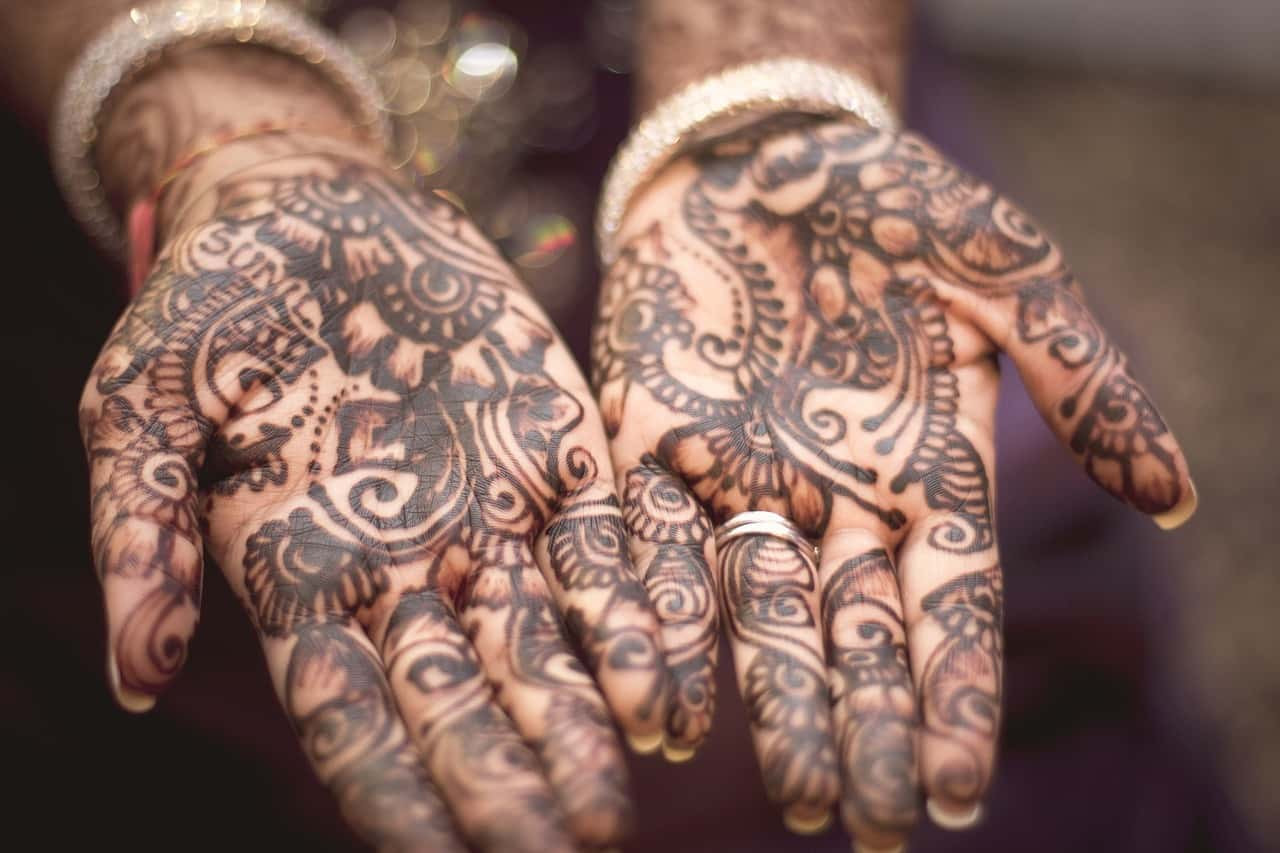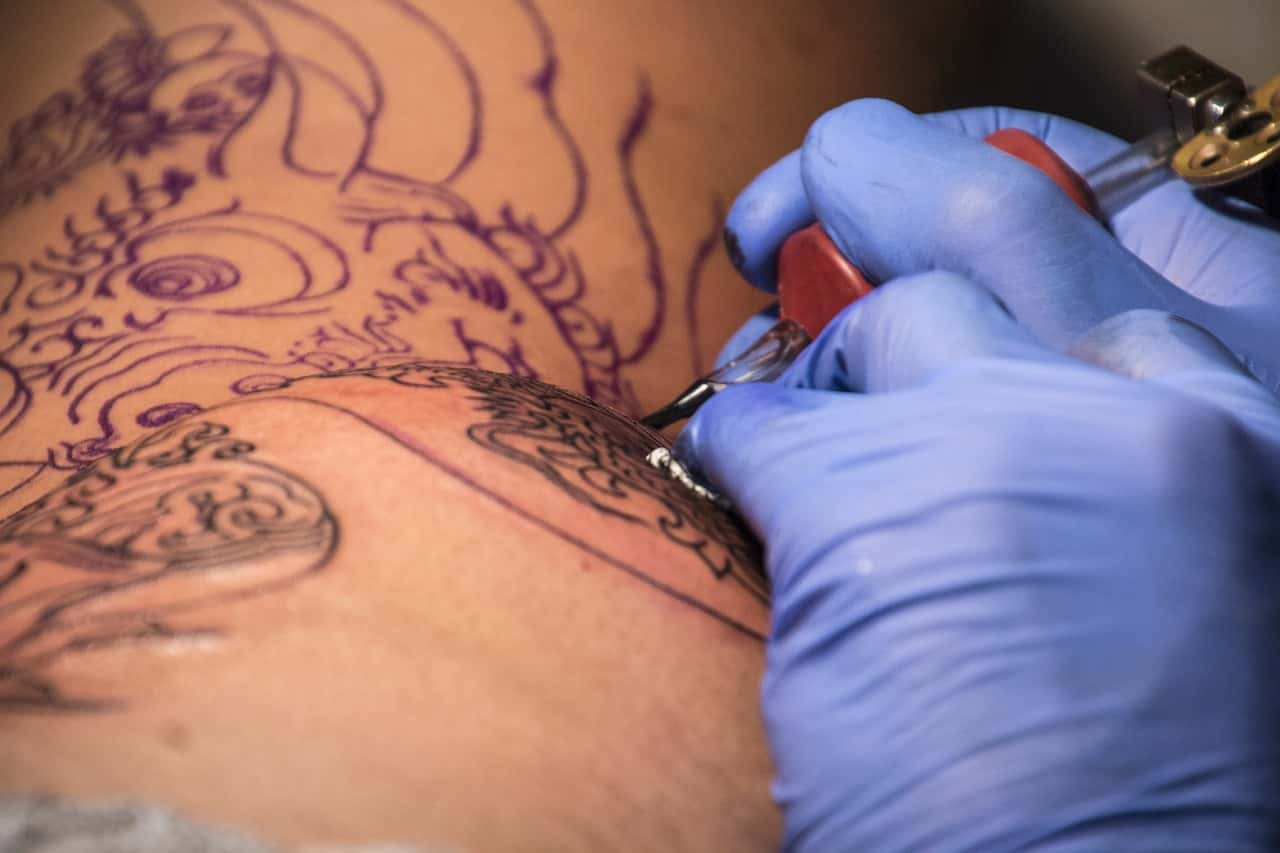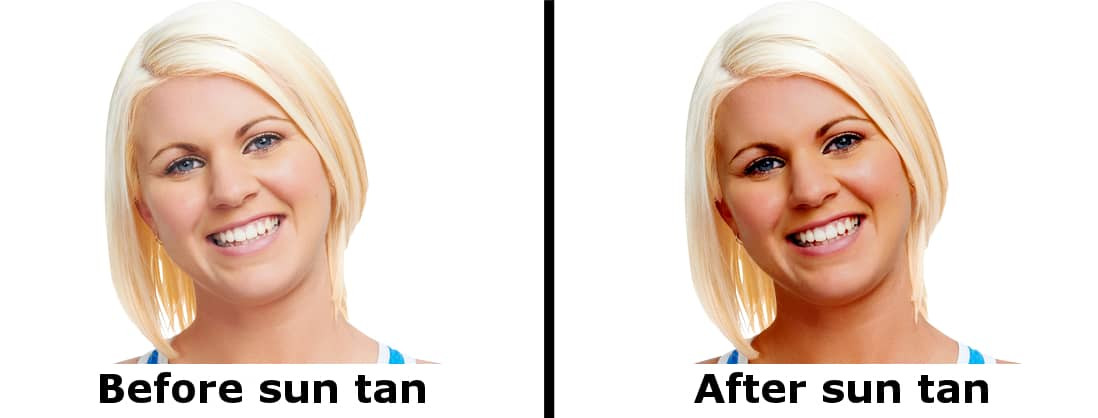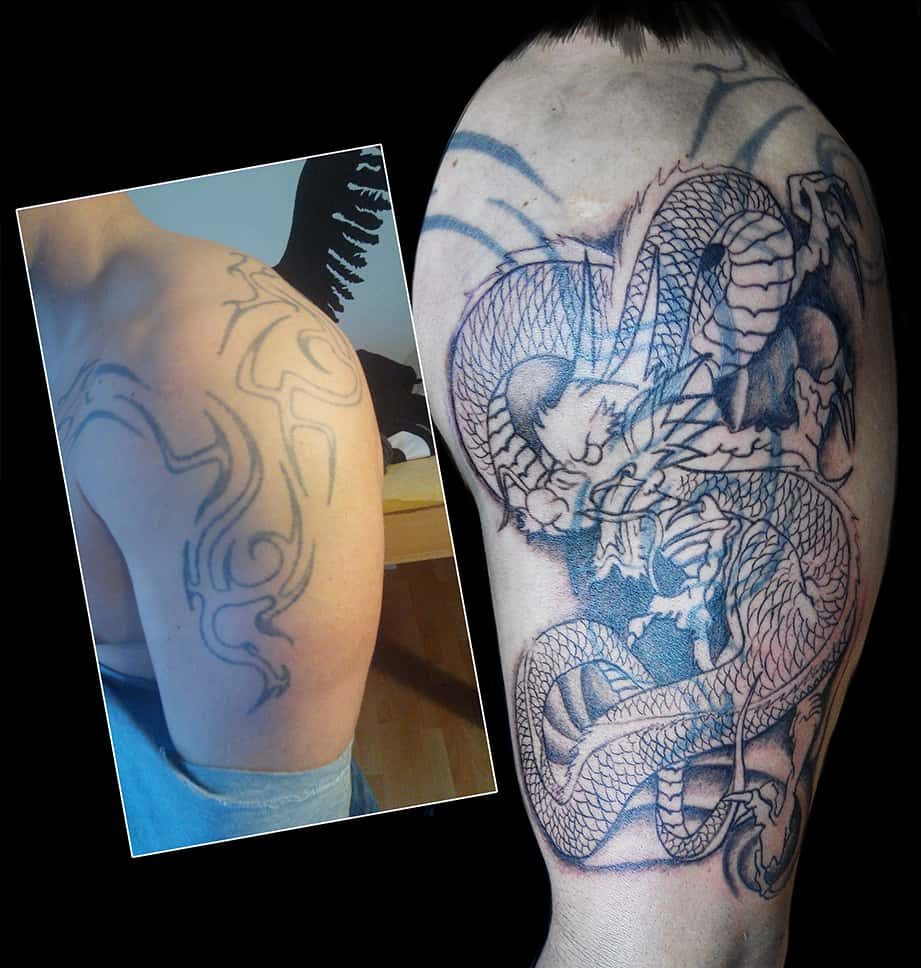Can You Cover A Tattoo With Skin Colored Ink? Absolutely, but it’s not the most effective method. At tattooat.com, we understand the desire to alter or remove unwanted tattoos, and while skin-colored ink might seem like a simple solution, it has limitations. For those in the USA looking for the best tattoo solutions, understanding the nuances of tattoo cover-ups and removals is key. This article explores the possibilities and limitations of using skin-colored ink for tattoo cover-ups, offering insights into alternative methods and how to achieve the best results for your skin art aspirations. Discover expert advice, innovative solutions, and the artistry behind successful tattoo transformations.
1. Understanding Tattoo Basics: How Tattoos Are Made
To understand why covering a tattoo with skin-colored ink isn’t a perfect solution, let’s delve into how tattoos are created.
1.1. Temporary Tattoos
Temporary tattoos are surface-level designs that use methods like painting, drawing, or stickers. Lasting only a few days to weeks, these tattoos color only the epidermis.
 Henna tattoo on a girl's hand
Henna tattoo on a girl's hand
1.2. Permanent Tattoos
Permanent tattoos penetrate the skin’s layers, residing in the dermis. This depth ensures the ink remains visible for a lifetime.
Human skin has three layers:
- Epidermis: The outer, waterproof layer.
- Dermis: The middle layer containing blood vessels, hair follicles, and connective tissues.
- Hypodermis: The innermost layer, mainly fatty tissue.
Tattoo artists use electrically powered needles to inject ink into the dermis, about half a millimeter below the surface.
 Tattoo artist at work
Tattoo artist at work
2. The Myth of Skin-Colored Tattoo Cover-Ups
The idea of covering an old tattoo with skin-colored ink seems logical but faces several challenges.
2.1. Why Skin-Colored Ink Often Fails
Tattoos are more like watercolors than oil paintings. Darker inks, once absorbed, are difficult to cover with lighter shades. Skin-colored ink applied over a dark tattoo will not effectively conceal it. Tattoo inks reside within immune cells in the dermis, meaning new ink layers won’t sit “on top” of the old.
2.2. Skin Tone Variability
Skin tone fluctuates with sun exposure, leading to potential discoloration. Even if the skin-colored ink initially matches, tanning or changes in skin pigmentation can make the cover-up appear as a discolored spot.
 Before and after suntan
Before and after suntan
3. Realistic Expectations for Tattoo Cover-Ups
Understanding the limitations of skin-colored ink is the first step toward realistic expectations. Instead of aiming for complete disappearance, focus on alternative cover-up methods.
3.1. The Role of Skilled Tattoo Artists
A qualified tattoo artist can skillfully cover an old tattoo using darker spots and strategic color placement to disguise the original design.
 Tattoo cover up
Tattoo cover up
3.2. Consultation is Key
Consult with an experienced artist to assess the old tattoo’s size, color, and location. The artist can provide insights into what designs and colors will effectively cover the existing tattoo.
4. Effective Tattoo Cover-Up Strategies
While skin-colored ink alone isn’t a solution, other methods offer better results.
4.1. Laser Tattoo Removal
Laser treatment is a reliable method to lighten or completely remove a tattoo. This process breaks down the ink particles in the skin, allowing the body to absorb them. Multiple sessions may be required.
4.2. The Power of Strategic Design
Choosing a new design that is larger and incorporates the old tattoo into its composition can be highly effective. Darker colors and intricate patterns can successfully mask the original tattoo.
4.3. Utilizing Darker Pigments
Darker inks like black, deep blues, and greens are excellent for covering unwanted tattoos. These colors effectively conceal lighter shades and create a new, vibrant design.
5. The Art of Tattoo Concealment: Beyond Skin-Colored Ink
Concealing a tattoo involves artistic skill and an understanding of color theory. Skin-colored ink has limited applications; true cover-ups require more strategic approaches.
5.1. Color Theory in Tattooing
Understanding how different colors interact is essential. Dark colors can effectively cover light colors, and contrasting shades can create depth and camouflage the old tattoo.
5.2. The Importance of Line Work
Bold line work can redirect the eye and obscure the original tattoo. Strong outlines and intricate details can draw attention away from the old design.
6. Tattoo Styles Ideal for Cover-Ups
Certain tattoo styles are better suited for cover-ups due to their design elements and color palettes.
6.1. Blackout Tattoos
Blackout tattoos involve covering large areas with solid black ink. This style is effective for completely obscuring unwanted tattoos, though it’s a bold choice.
6.2. Traditional Tattoos
Traditional tattoos, with their bold outlines and solid colors, are excellent for cover-ups. The classic style can easily incorporate and mask older tattoos.
6.3. Neo-Traditional Tattoos
Neo-traditional tattoos offer a modern twist on the classic style, with vibrant colors and intricate details that make them ideal for concealing old tattoos.
6.4. Realism Tattoos
Realism tattoos, when done by a skilled artist, can use shading and detail to create a new image that effectively covers the old one.
7. Caring for Your Tattoo Cover-Up
Proper aftercare is crucial to ensure the longevity and vibrancy of your tattoo cover-up.
7.1. Immediate Aftercare
Keep the new tattoo clean and moisturized. Follow the artist’s instructions for washing and applying ointment to promote healing.
7.2. Long-Term Maintenance
Protect the tattoo from sun exposure by applying sunscreen regularly. Keep the skin hydrated to maintain the ink’s vibrancy and prevent fading.
8. Choosing the Right Tattoo Artist for Your Cover-Up
Selecting a skilled and experienced tattoo artist is essential for a successful cover-up.
8.1. Research and Reviews
Look for artists specializing in cover-up work. Read reviews and view their portfolios to assess their skill and style.
8.2. Consultation and Communication
Discuss your expectations and concerns with the artist during the consultation. A good artist will provide realistic advice and work with you to create the best design.
9. The Emotional Aspect of Tattoo Transformations
Tattoos are personal expressions, and transforming an unwanted tattoo can be an emotional journey.
9.1. Regaining Confidence
A successful cover-up can restore confidence and self-esteem. Transforming a regrettable tattoo into a beautiful piece of art can be empowering.
9.2. Embracing Change
Tattoo transformations symbolize personal growth and change. They represent the ability to redefine oneself and embrace new beginnings.
10. Tattoo Trends in the USA: What’s New and Popular
Stay updated with the latest tattoo trends in the USA to find inspiration for your next piece.
10.1. Current Styles and Designs
Popular trends include minimalist designs, watercolor tattoos, and geometric patterns. Stay informed to discover new ideas and styles that resonate with you.
10.2. Influential Artists and Studios
Follow influential tattoo artists and studios across the USA to stay inspired and connected with the tattoo community.
11. Tattoo Removal Options: An Overview
If a cover-up isn’t the right choice, explore tattoo removal options.
11.1. Laser Removal Technology
Laser tattoo removal is the most common and effective method. It uses concentrated light to break down the tattoo ink, allowing the body to absorb it.
11.2. Surgical Excision
Surgical excision involves cutting out the tattooed skin and stitching the remaining skin together. This method is suitable for small tattoos but may leave a scar.
11.3. Dermabrasion
Dermabrasion involves sanding down the skin to remove the tattoo. This method is less common and can be painful, with a higher risk of scarring.
12. Factors to Consider Before Getting a Tattoo Cover-Up
Before deciding on a cover-up, consider several factors to ensure the best outcome.
12.1. Skin Type and Tone
Skin type and tone can affect the visibility and vibrancy of the cover-up. Discuss these factors with your artist to choose the right inks and designs.
12.2. Tattoo Size and Location
The size and location of the old tattoo will influence the cover-up design. Larger tattoos may require more extensive cover-up work.
12.3. Pain Tolerance
Covering up a tattoo can be more painful than getting a new tattoo, especially if the area has been previously tattooed.
13. Debunking Common Tattoo Myths
Separate fact from fiction regarding tattoos and cover-ups.
13.1. Tattoos Fade Over Time
While tattoos may fade slightly over time, proper aftercare and sun protection can minimize fading.
13.2. All Tattoo Inks Are the Same
Different tattoo inks vary in quality and composition. Choose reputable brands and discuss ink options with your artist.
13.3. Tattoos Cannot Be Completely Removed
While complete removal can be challenging, laser technology has made significant advancements in tattoo removal.
14. The Future of Tattoo Cover-Ups
Explore emerging technologies and techniques in tattoo cover-ups.
14.1. Innovative Inks and Methods
Researchers are developing new inks and methods that may improve the effectiveness and longevity of tattoo cover-ups.
14.2. Digital Tattoo Design
Digital tattoo design tools allow artists to create precise and intricate cover-up designs, ensuring optimal coverage and aesthetics.
15. Finding Inspiration for Your Tattoo Cover-Up Design
Discover resources and ideas to inspire your cover-up design.
15.1. Online Tattoo Galleries
Explore online tattoo galleries for inspiration and ideas. Look for cover-up examples to see what is possible.
15.2. Tattoo Conventions and Events
Attend tattoo conventions and events to meet artists, see their work, and gather inspiration for your cover-up.
16. Tattoo Aftercare Products: What to Use
Use the right aftercare products to promote healing and maintain the vibrancy of your tattoo cover-up.
16.1. Recommended Ointments and Lotions
Choose fragrance-free, hypoallergenic ointments and lotions to keep the skin moisturized and prevent irritation.
16.2. Sunscreen and Protection
Protect the tattoo from sun exposure with a high-SPF sunscreen to prevent fading and damage.
17. Tattooing and Cultural Significance
Understand the cultural significance of tattoos in different communities.
17.1. Tattoos in Indigenous Cultures
Many indigenous cultures use tattoos for spiritual, ceremonial, and symbolic purposes.
17.2. Modern Tattoo Culture
Modern tattoo culture embraces self-expression, artistry, and personal storytelling through tattoos.
18. Health and Safety Considerations for Tattoos
Prioritize health and safety when getting a tattoo.
18.1. Choosing a Reputable Tattoo Studio
Select a tattoo studio with a clean and sterile environment. Ensure the artists follow proper hygiene practices.
18.2. Potential Risks and Complications
Be aware of potential risks, such as infections, allergic reactions, and scarring. Discuss any concerns with your artist or healthcare provider.
19. The Psychology of Tattoos: Why We Get Inked
Explore the psychological reasons behind getting tattoos.
19.1. Self-Expression and Identity
Tattoos allow individuals to express their identity, beliefs, and personal stories.
19.2. Emotional Healing and Empowerment
Tattoos can be a form of emotional healing and empowerment, helping individuals reclaim their bodies and experiences.
20. Legal Aspects of Tattooing in the USA
Understand the legal regulations surrounding tattooing in the USA.
20.1. Age Restrictions and Consent
Most states have age restrictions and require parental consent for minors to get tattoos.
20.2. Licensing and Regulations
Tattoo artists and studios must be licensed and comply with health and safety regulations.
21. Case Studies: Successful Tattoo Cover-Ups
Examine real-life examples of successful tattoo cover-ups.
21.1. Before and After Transformations
View before and after photos of tattoo cover-ups to see the possibilities and results.
21.2. Artist Testimonials and Techniques
Learn from tattoo artists about their techniques and strategies for successful cover-ups.
22. Tattoo Styles Through the Decades
Trace the evolution of tattoo styles over the years.
22.1. Historical Tattoo Trends
Explore historical tattoo trends and their cultural significance.
22.2. Modern Tattoo Innovations
Discover modern tattoo innovations and their impact on the industry.
23. Tattooing as a Form of Art Therapy
Explore the therapeutic benefits of tattooing.
23.1. Emotional Release and Catharsis
Tattooing can provide emotional release and catharsis, helping individuals process trauma and express emotions.
23.2. Body Image and Self-Acceptance
Tattoos can promote body image and self-acceptance, allowing individuals to reclaim their bodies and identities.
24. Common Mistakes to Avoid with Tattoo Cover-Ups
Learn from common mistakes to ensure a successful cover-up.
24.1. Choosing the Wrong Artist
Select an artist with experience in cover-up work and a style that aligns with your vision.
24.2. Not Following Aftercare Instructions
Follow aftercare instructions diligently to promote healing and prevent complications.
25. Tattooing and Personal Empowerment
Discover how tattoos can empower individuals.
25.1. Reclaiming Your Body
Tattoos allow individuals to reclaim their bodies and express their identities.
25.2. Celebrating Milestones
Tattoos can commemorate milestones and significant life events.
26. Tattooing and Self-Care
Explore how tattooing can be a form of self-care.
26.1. Investing in Yourself
Getting a tattoo can be a form of self-investment and personal expression.
26.2. Creating a Positive Ritual
The tattooing process can be a positive ritual that promotes self-awareness and mindfulness.
27. The Ethics of Tattooing
Consider the ethical implications of tattooing.
27.1. Cultural Appropriation
Avoid appropriating cultural symbols or designs without understanding their significance.
27.2. Consent and Respect
Ensure all parties involved in the tattooing process provide consent and respect each other’s boundaries.
28. Tattooing and Body Modification
Explore the broader context of body modification.
28.1. Piercings and Scarification
Learn about other forms of body modification and their cultural significance.
28.2. Ethical Considerations
Consider the ethical implications of body modification and the importance of informed consent.
29. Resources for Tattoo Enthusiasts
Discover valuable resources for tattoo enthusiasts.
29.1. Online Forums and Communities
Join online forums and communities to connect with other tattoo enthusiasts.
29.2. Tattoo Magazines and Publications
Read tattoo magazines and publications to stay informed about trends, artists, and techniques.
30. Frequently Asked Questions (FAQs) About Tattoo Cover-Ups
Get answers to common questions about tattoo cover-ups.
30.1. Can a tattoo be completely covered up?
While complete obliteration is challenging, skilled artists can effectively disguise old tattoos with strategic designs and colors.
30.2. How long does a tattoo cover-up take to heal?
Healing times vary but typically range from 2 to 4 weeks with proper aftercare.
30.3. Is a tattoo cover-up more expensive than a new tattoo?
Cover-ups often require more time and skill, potentially increasing the cost.
30.4. Can any tattoo artist do a cover-up?
It’s best to choose an artist with specific experience in cover-up work.
30.5. What colors are best for tattoo cover-ups?
Darker colors like black, deep blues, and greens are most effective for concealing old tattoos.
30.6. Will the old tattoo affect the new design?
The old tattoo’s size, color, and location will influence the design and outcome of the cover-up.
30.7. How do I prepare for a tattoo cover-up?
Stay hydrated, avoid alcohol, and ensure the skin is clean and healthy.
30.8. Can I cover a scar with a tattoo?
Yes, tattoos can effectively cover scars, but consult with an artist to assess the scar tissue.
30.9. What if I don’t like the cover-up tattoo?
Consider laser removal or further modification by a skilled artist.
30.10. How do I find the right tattoo artist for a cover-up?
Research artists, read reviews, and view portfolios to find someone with the right skills and style.
At tattooat.com, we’re dedicated to providing a wealth of inspiration for tattoo designs, connecting you with exceptionally talented artists, and offering comprehensive articles to guide you through every step of your tattoo journey. Whether you’re dreaming of a subtle enhancement or a complete tattoo transformation, our resources are tailored to meet your needs.
Ready to explore stunning tattoo designs, find the perfect artist, and dive into insightful articles? Visit tattooat.com today and let us help you bring your tattoo vision to life!
Address: 1825 SW Broadway, Portland, OR 97201, United States.
Phone: +1 (503) 725-3000.
Website: tattooat.com.